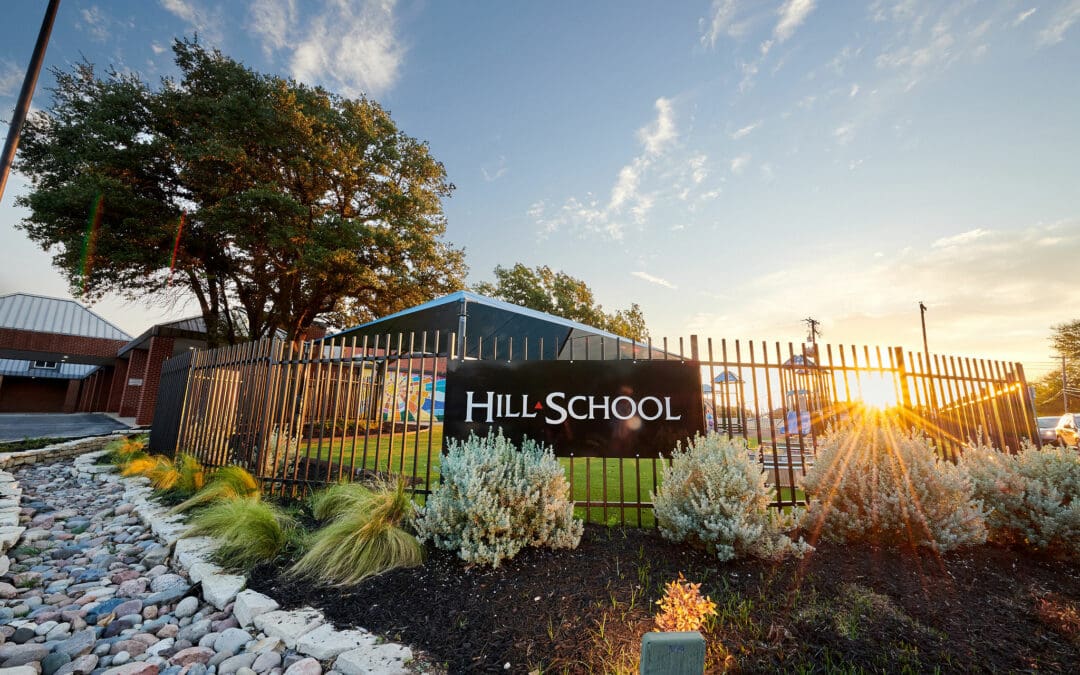
PROFILE – Hill School of Fort Worth
Explore the personalized educational approach at Hill School of Fort Worth, designed to empower students with learning differences to achieve academic success and personal growth.

Explore the personalized educational approach at Hill School of Fort Worth, designed to empower students with learning differences to achieve academic success and personal growth.

Learn about Fort Worth Country Day School, known for its commitment to developing well-rounded students through excellent academics and vibrant extracurricular programs.

Photo by Edmond Dantès
How to Harness Their Power for Your College Journey
Private school alumni networks hold significant sway in the college admissions landscape. These networks, fortified by generations of graduates and a tradition of mutual support, can be a key factor in providing current students with a competitive edge. For students aspiring to gain entry into prestigious colleges and universities, the strategic use of alumni connections often proves to be an invaluable asset. This extends beyond mere name recognition – active engagement with alumni can lead to mentorships, internships, and letters of recommendation that carry weight with admissions committees.
The importance of leveraging alumni networks is not only recognized by students but is often facilitated by the private schools themselves. Many institutions have structured programs designed to cultivate relationships between alumni and current students. These programs serve to bridge the gap, providing structured environments for networking events, career guidance, and experiential learning opportunities that can enrich a student’s application and appeal to college admissions offices.
However, the effectiveness of an alumni network can largely depend on how well a student utilizes these resources. Engaging with alumni requires a proactive approach, where students must often take the initiative to attend events, seek out mentorship, and communicate their academic and professional goals. By doing so, students demonstrate their commitment and diligence, qualities that, when paired with the backing of a strong alumni network, can significantly enhance their college admissions prospects.
The Role of Alumni Networks in College Admissions
Alumni networks play a strategic role in college admissions by offering prospective students networking opportunities and occasionally influencing the admissions process through recommendations.
Understanding Alumni Influence
Alumni of private schools often hold influential positions in various fields, including education. Institutions value their alumni, acknowledging that long-term relationships contribute to a legacy of success and can create a positive feedback loop for admissions. Admissions committees may consider an applicant’s alumni connections as one of many factors, especially if an alumnus is actively engaged with the school and known for their support.
Alumni EngagementPotential Impact on AdmissionsFinancial SupportMay increase alumni’s sway in admissionsRegular VolunteerCould lead to a stronger considerationNotable AchieverAlumni’s endorsement might carry more weight
Advantages of Alumni Connections
Students with alumni connections can often access a wealth of resources that might give them an edge in the admissions process.
Networking Opportunities: Alumni may provide valuable guidance and mentorship.
Insider Knowledge: They can offer insights into the school’s culture and expectations.
Alumni recommendations can be a testament to the student’s potential compatibility with an institution’s values and community. These connections are especially advantageous during interviews or admissions events, where a familiar face can help a candidate stand out.
Strategies for Engaging with Private School Alumni
Leveraging alumni networks effectively can open doors for prospective college students. This section outlines practical ways to connect with private school alumni to enhance college admission prospects.
Building Relationships with Alumni
To foster long-lasting connections with alumni, students should start by actively participating in school’s alumni programs. Establishing a genuine rapport by showing interest in alumni careers and seeking advice can lead to mentorship.
Attend School-Sponsored Alumni Mixers: These events are often facilitated by the school, allowing students to interact with graduates.
Create a LinkedIn Profile: A professional online presence can help students to connect with alumni in relevant fields.
Maximizing Networking Opportunities
Effective networking involves more than just making initial contact; it requires consistent communication and following up. Students can:
Request Informational Interviews: Engaging in one-on-one conversations with alumni provides personal insights and advice on the college admissions process.
Join Alumni Groups: Many private schools have alumni groups on social networking sites which students can join to stay updated on events and opportunities.
Utilizing Alumni Events for College Admission Success
Alumni events can be strategic platforms for students aiming to enter competitive colleges. They should:
Prepare Questions in Advance: Having specific questions about colleges and programs shows preparation and dedication.
Express Appreciation: A thank-you note after an event demonstrates politeness and helps maintain the relationship.
Ethical Considerations in Leveraging Alumni Ties
Leveraging alumni networks can influence college admissions, but it’s vital to consider the ethics of such practices. Equity in access and the impact of socioeconomic status must be examined.
Ensuring Fair Admission Practices
Colleges typically maintain policies meant to foster fair admissions practices. These policies aim to evaluate candidates based on merit and potential rather than on their connections. When alumni ties are considered in the admissions process, it can create a perception of unfair advantage. This is especially true if alumni relationships become a significant factor over a candidate’s academic achievements and extracurricular merits.
Transparency: Colleges should be transparent about how alumni connections factor into admissions decisions. Clear criteria can mitigate misunderstandings about the admissions process.
Merit-based Evaluation: Admissions committees should ensure that alumni connections are not the deciding factor in the application process; merit and individual achievement should remain at the core.
Mitigating Socio-Economic Disparities
The use of alumni networks in admissions can exacerbate socio-economic divides. Students from less privileged backgrounds might not have the same legacy opportunities as those from wealthier, more connected families.
Equal Opportunities: Institutions need to provide equal consideration for applicants regardless of their alumni ties to prevent exacerbating social inequities.
Support Programs: Scholarships and outreach programs can help balance the scales, giving students from diverse socio-economic backgrounds a fair chance at admission.
Implementing measures to assure admissions equity requires a conscientious effort from educational institutions to maintain the integrity of their processes and the value of earned achievements.

Your Guide to Educational Opportunities and Community Insights

Spring Activities to Enrich Private Elementary Learning
Outdoor education plays a crucial role in the all-round development of students, particularly in the elementary years where sensory experiences and hands-on activities lay the foundation for lifelong learning. Private elementary schools have the unique opportunity to tailor spring activities that foster an appreciation for nature, encourage physical activity, and nurture environmental stewardship among students. As the days grow longer and the temperatures milder, spring offers a plethora of opportunities for educators to take the classroom outdoors and integrate academic concepts with the blooming world around them.
Field trips to local parks, botanical gardens, and nature reserves become living classrooms where students can observe ecosystems in action and witness the change of seasons up close. Biology comes to life as students track the growth of plants and the emergence of insects, enabling them to make real-world connections to the science lessons taught within school walls. Teachers can guide students through activities such as identifying native species, planting gardens, or participating in citizen science projects which contribute valuable data to local environmental efforts.
Additionally, incorporating outdoor physical education activities helps children develop their motor skills, coordination, and confidence. Activities like orienteering and team-building sports not only support physical health but also teach valuable life skills, such as problem-solving, leadership, and cooperation. By stepping out of the traditional indoor setting, students are provided with a stimulating environment where learning is dynamic and engaging, thus enhancing their educational experience and fostering a sense of excitement about learning.
Benefits of Outdoor Education
Outdoor education offers significant advantages for private elementary students, particularly in fostering a connection to nature, improving physical well-being, and enhancing social skills critical at this formative stage.
Fostering Environmental Stewardship
Outdoor education engages students directly with the environment, nurturing a sense of responsibility and connection to the natural world. They learn about local ecosystems and develop an understanding of their impact on the planet, which can lead to lifelong environmental stewardship.
Awareness: Encountering local wildlife and plant species up-close increases student awareness about biodiversity.
Conservation: Activities like recycling projects and nature walks teach children the importance of conservation efforts.
Improving Physical Health
Physical activity is a cornerstone of outdoor education, contributing to overall healthier lifestyles for children. Regular exposure to sunlight provides vitamin D, while diverse physical activities build strength and coordination.
Exercise: Outdoor games and hiking promote cardiorespiratory fitness.
Motor Skills: Climbing trees or navigating obstacle courses enhances fine and gross motor skills.
Enhancing Social Skills
Being outdoors provides children with unstructured playtime, which is crucial for social development. They learn to cooperate, communicate, and solve problems together.
Teamwork: Group challenges demand collaboration and role-sharing.
Communication: Negotiating play scenarios refines verbal and non-verbal communication skills.
Program Planning and Safety
When planning outdoor educational activities for private elementary students, educators must balance engaging curriculum development with meticulous safety measures to ensure a safe and inclusive learning environment.
Creating an Inclusive Curriculum
Educators should design programs that cater to a diverse range of interests and abilities. Activities may include:
Nature Walks: Structured to be accessible for all fitness levels.
Team-building Games: Modified to ensure every student can participate.
Weather Considerations for Spring
Spring weather can be unpredictable, and planning must account for this:
Weather ConditionActivity AdjustmentRainProvide waterproof gear and indoor alternatives.SunSchedule sun-safe times and enforce sunscreen use.
Essential Safety Guidelines
Safety is paramount for any outdoor education program:
First Aid: A trained professional present at all times.
Emergency Procedures: Regular drills and clear instructions for the students.
Equipment Check: Regular inspection of all outdoor equipment for safety.
Supervision Ratios: Maintain the appropriate adult-to-student ratio to ensure constant supervision.
Spring Activity Ideas
March and April bring warmer temperatures and longer days, perfect for integrating hands-on, outdoor learning activities. These springtime projects help students engage with the natural world, promote physical activity, and stimulate creativity.
Gardening Projects
Elementary students can learn about botany and the environment through Gardening Projects. Teachers can allocate small plots for each child or group of children to manage.
Planting: Students plant seeds or seedlings, learning about the growth cycle of plants.
Maintenance: They water, weed, and monitor their plants, observing the conditions necessary for growth.
Harvesting: If appropriate, children can harvest edible plants and learn about healthy food sources.
Nature Walks and Scavenger Hunts
Nature Walks and Scavenger Hunts encourage observation and exploration.
Identification: Provide students with checklists of local flora and fauna to identify.
Sensory Walks: Encourage them to engage their senses by listening for bird calls or feeling different textures of leaves.
Scavenger Hunts: Create themed hunts to find objects of certain shapes, colors, or numbers in nature.
Outdoor Art and Creativity
Linking art with nature, Outdoor Art and Creativity sessions allow children’s imaginations to flourish.
Natural Materials: They can use sticks, leaves, rocks, and seeds to create artworks.
Land Art: Encourage the arrangement of natural elements to create large-scale outdoor pieces.
Photography: If cameras are available, students can photograph scenes that capture the essence of spring.
Evaluating the Impact
Evaluating the impact of outdoor education activities is essential to ensure that they meet educational goals and provide a beneficial learning experience for private elementary students.
Assessment Strategies
Instructors can assess the effectiveness of spring activities through observation checklists and student portfolios. These tools help in tracking the progress and engagement of each student during the activity.
Observation Checklists
Tailored to specific activities (e.g., plant identification, team-building exercises)
Document student participation and understanding
Student Portfolios
Collections of student work (e.g., sketches of plants, reflective journals)
Show growth over the course of the activity
Gathering Student Feedback
After activities, it’s critical to gather student feedback through surveys or group discussions. Students may express what they enjoyed or what could be improved, providing valuable insights.
Surveys
Capture individual student feelings and learning outcomes
Can include both multiple-choice and open-ended questions
Group Discussions
Encourage students to share experiences in a more informal setting
Can reveal insights not captured in surveys
Parental Involvement and Feedback
Parental feedback is obtained largely through questionnaires and parent-teacher conferences. Parents’ perceptions of their child’s enjoyment and learning can guide future activities.